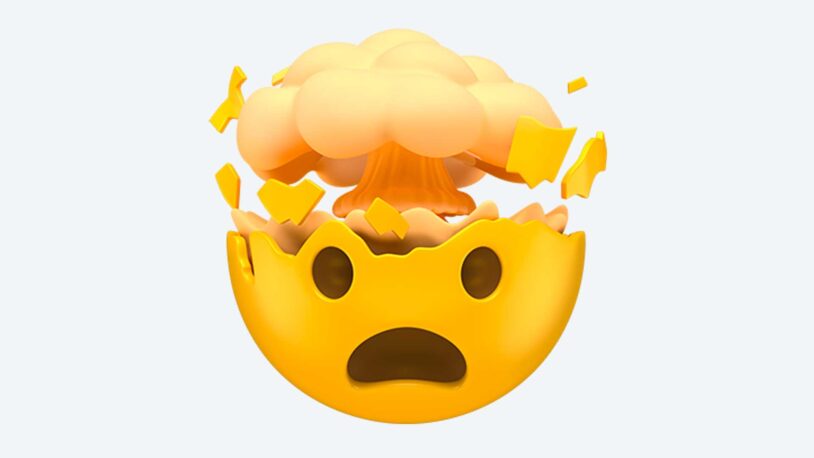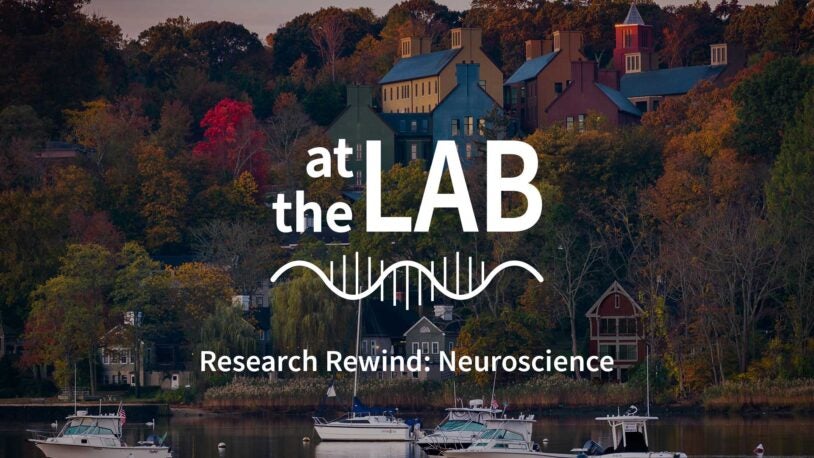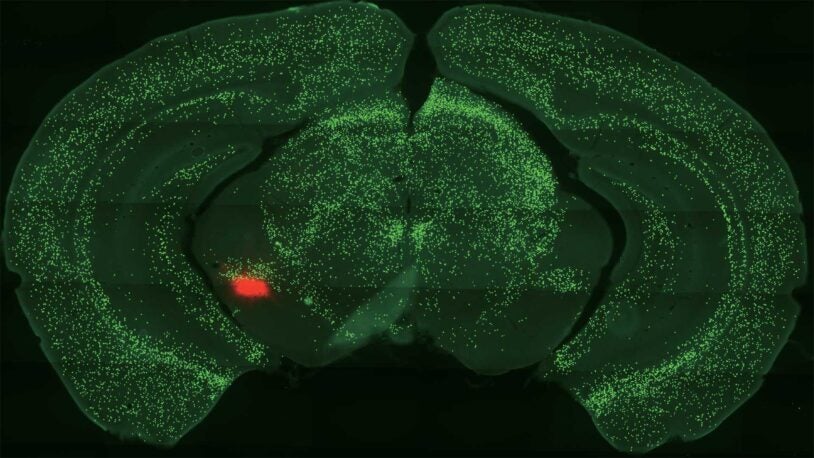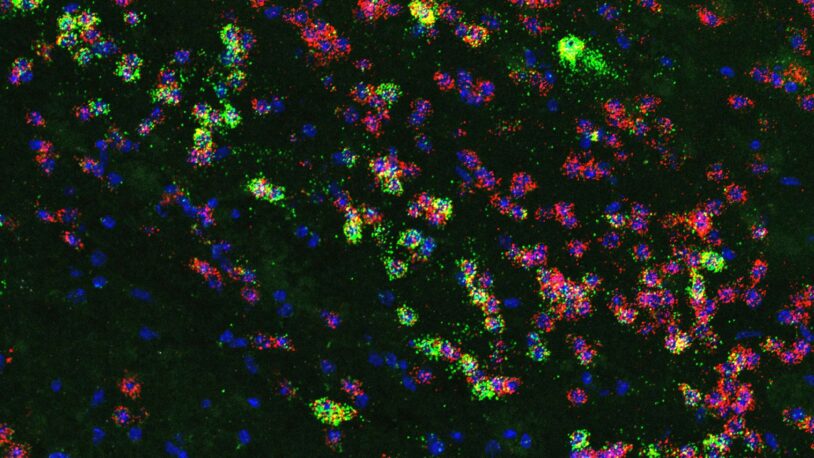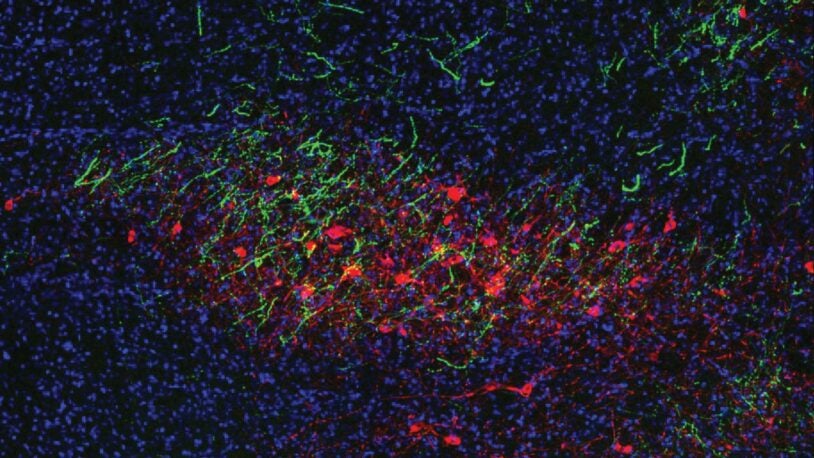
Bo Li
Professor
Robert Lourie Professor of Neuroscience
Ph.D., The University of British Columbia, 2003
bli@cshl.edu | 516-367-8485
My group studies the neural circuits underlying cognitive function and dysfunction as they relate to anxiety, depression, schizophrenia and autism. We use sophisticated technologies to manipulate specific neural circuits in the rodent brain to determine their role in behavior. We are interested in changes in synaptic strength that may underlie mental disorders.
Understanding the link between neural circuits and behavior has been the focus of research in my lab. We are particularly interested in studying the synaptic and circuit mechanisms underlying reward processing, attention, and learning and memory; as well as synaptic and circuit dysfunctions responsible for maladaptive behaviors that are related to major mental disorders. We integrate in vitro and in vivo electrophysiology, imaging, molecular, genetic, optogenetic, and chemogenetic techniques to probe and manipulate the function of specific neural circuits – with a focus on the fear and reward circuits – in the rodent brain, and to determine how these circuits participate in adaptive or maladaptive behavioral responses in various tasks.
The CSHL School of Biological Sciences’ class of 2025
May 5, 2025
The School of Biological Sciences awarded Ph.D. degrees to nine students this year. Read some of their stories and reflections on their time at CSHL.
A perception quiz to blow your mind
March 26, 2025
Ready to think differently about how you see, smell, hear, taste, touch, and make sense of the world around you?
At the Lab Season 1 Research Rewind: Neuroscience
October 15, 2024
What do you think? How do you know? And who are you anyway? We probe each of these questions with the help of Cold Spring Harbor’s neuroscientists.
At the Lab Episode 20: Cleanup on IL-6
August 20, 2024
CSHL Professor Bo Li set out to study a tiny group of neurons involved in cancer cachexia. What he found astounded even him.
How to stop cancer cachexia? Start at the top
July 8, 2024
Professor Bo Li and a team of collaborators from four CSHL labs have discovered a new potential drug target for the lethal wasting disease.
Bite into this diet and disease quiz
July 5, 2023
Test your knowledge of how diet and nutrition affect health and disease with this short quiz.
The CSHL School of Biological Sciences’ class of 2023
May 7, 2023
The School of Biological Sciences awarded 11 Ph.D. degrees this year. Here, the graduates reflect on their time and experiences at CSHL.
Danger or pleasure? How we learn to tell the difference
April 5, 2023
CSHL neuroscientists discover that certain neurons in the brain’s central amygdala are key to helping us learn about threats and rewards.
Got junk food on the brain? These cells may be to blame
October 20, 2022
CSHL scientists discovered a group of neurons in mouse brains that drive overeating. The findings could help develop better obesity treatments.
Fine-tuning motivation in the brain
December 9, 2021
Scientists have pinpointed a group of neurons in the brain that can adjust a mouse’s motivational drive to seek out rewards.
Selected Publications
Oligophrenin-1 moderates behavioral responses to stress by regulating parvalbumin interneuron activity in the medial prefrontal cortex
1 Apr 2021 | Neuron
Wang, Minghui; Gallo, Nicholas; Tai, Yilin; Li, Bo; Van Aelst, Linda;
A Central Amygdala-Globus Pallidus Circuit Conveys Unconditioned Stimulus-Related Information and Controls Fear Learning
18 Nov 2020 | Journal of Neuroscience | 40(47):9043-9054
Giovanniello, J; Yu, K; Furlan, A; Nachtrab, G; Sharma, R; Chen, X; Li, B;
A Genetically Defined Compartmentalized Striatal Direct Pathway for Negative Reinforcement
1 Oct 2020 | Cell | 183(1):211-227.e20
Xiao, X; Deng, H; Furlan, A; Yang, T; Zhang, X; Hwang, G; Tucciarone, J; Wu, P; He, M; Palaniswamy, R; Ramakrishnan, C; Ritola, K; Hantman, A; Deisseroth, K; Osten, P; Huang, Z; Li, B;
A central amygdala-globus pallidus circuit conveys unconditioned stimulus information and controls fear learning
30 Apr 2020 | bioRxiv
Giovanniello, Jacqueline; Yu, Kai; Furlan, Alessandro; Nachtrab, Gregory; Sharma, Radhashree; Chen, Xiaoke; Li, Bo;
Parvalbumin interneuron dysfunction in a thalamo-prefrontal cortical circuit in Disc1 locus impairment mice
4 Feb 2020 | eNeuro
Delevich, K; Jaaro-Peled, H; Penzo, M; Sawa, A; Li, B;
All Publications
Dynorphin modulates reward-seeking actions through a pallido-amygdala cholinergic circuit.
8 Apr 2025 | Neuron
Sun, Qingtao; Liu, Mingzhe; Guan, Wuqiang; Xiao, Xiong; Dong, Chunyang; Bruchas, Michael; Zweifel, Larry; Li, Yulong; Tian, Lin; Li, Bo;
The area postrema: a critical mediator of brain-body interactions.
16 Oct 2024 | Genes & Development | 38(17-20):793-797
van de Lisdonk, Daniëlle; Li, Bo;
Unlocking opioid neuropeptide dynamics with genetically encoded biosensors.
Sep 2024 | Nature Neuroscience | 27(9):1844-1857
Dong, Chunyang; Gowrishankar, Raajaram; Jin, Yihan; He, Xinyi; Gupta, Achla; Wang, Huikun; Sayar-Atasoy, Nilüfer; Flores, Rodolfo; Mahe, Karan; Tjahjono, Nikki; Liang, Ruqiang; Marley, Aaron; Or Mizuno, Grace; Lo, Darren; Sun, Qingtao; Whistler, Jennifer; Li, Bo; Gomes, Ivone; Von Zastrow, Mark; Tejeda, Hugo; Atasoy, Deniz; Devi, Lakshmi; Bruchas, Michael; Banghart, Matthew; Tian, Lin;
Cell-type-specific striatal modulation of amygdalar acetylcholine in salience assignment
26 Aug 2024 | bioRxiv
Chen, Aixiao; Li, Yunjing; Zhu, Hangfei; Gu, Hanmei; Weng, Yanhong; Ye, Qinyong; Guan, Wuqiang; Sun, Qingtao; Li, Bo; Xu, Fuqiang; Deng, Hanfei; Xiao, Xiong;
Dynorphin modulates motivation through a pallido-amygdala cholinergic circuit.
31 Jul 2024 | bioRxiv
Sun, Qingtao; Liu, Mingzhe; Guan, Wuqiang; Xiao, Xiong; Dong, Chunyang; Bruchas, Michael; Zweifel, Larry; Li, Yulong; Tian, Lin; Li, Bo;

